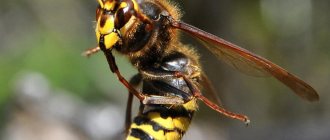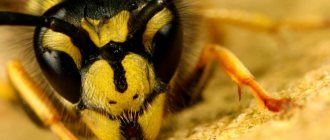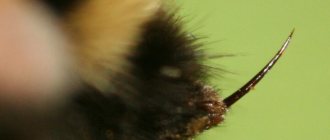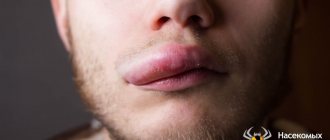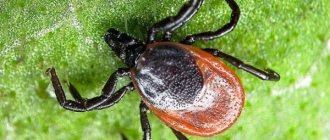During the warm summer months, trees, plants and flowers bloom, birds sing, and our cats spend more time outdoors. Local wildlife is at its peak as summer takes advantage of all the fruit on offer. Unfortunately, this is the time when insect bites most affect both us and our pets. Bees and wasps are a common cause of insect bites in cats. In general, bees and wasps do not bite unless provoked. Cats can be "accidentally" stung if they touch, step on, or kick wasps and bees.
Bees and wasps are known to be venomous insects that inject venom into an unsuspecting victim when they bite. When a venom is injected into an animal, it can cause local tissue reactions or a whole body reaction in allergic or sensitive cats. More adventurous or inquisitive cats, such as kittens, may be more likely to suffer from wasp and bee stings as they are more likely to explore or try to catch these insects. Cats have a strong prey drive, which makes them more likely to be stung by wasps or bees than other species.
Signs that your cat has been stung by a bee or wasp
If you've ever been stung by a bee or wasp, you'll understand that it can be painful and irritating. Bee venom is acidic with a pH of 5.0 to 5.5 and is therefore very irritating to the affected tissue. Wasp venom is closer to neutral at a pH of about 6.8-6.9. Nonallergic reactions usually develop within a few hours, but severe allergic reactions (anaphylaxis) tend to occur more quickly and often within one hour of a cat being stung by a bee or wasp. The consequences of a bee or wasp sting will depend on where your cat was stung, how many stings she received, and whether she has been stung before. Cats are very good at hiding pain or discomfort, but some of the symptoms they will show if they are stung by a bee or wasp are listed below:
© shutterstock
- By unexpectedly nipping or licking a body part - you may have noticed that they were playing with a wasp or bee in the garden a few minutes before.
- Swelling, redness, itching and local irritation - at the site of a bee or wasp sting. Cats are usually stung on the paw, face or nose. In long-haired cats, these skin changes may be more difficult to detect.
- Pain – Your cat may vocalize more frequently than usual.
- Cats that may have a bee sting in their mouth or a wasp sting in their nose may paw at the area due to discomfort .
- Urticaria is an allergic skin pattern characterized by multiple swellings throughout the body.
- Trouble breathing or difficulty swallowing – If your cat is stung by a bee or wasp on the face or in the mouth, such as the tongue, it may cause swelling of the face, mouth and/or neck.
- Drooling, vomiting, diarrhea, rapid breathing, difficulty breathing, pale gums (shock), and collapse may occur if your cat develops anaphylaxis as a result of a wasp or bee sting. This happens more often with cats that have been stung before.
Options for helping your pet at home
The cat has a fever: what to do at home
Where to give intramuscular injections to a cat
If the above symptoms are detected, experts strongly advise contacting a veterinarian as soon as possible. But, since many owners first of all turn to the Internet for advice, several recommendations should be given.
- First of all, you need to determine the location of the bite. You won’t be able to cope on your own, since the animal at this moment is not in the mood for contact, so someone will have to hold the cat by force, and someone will have to check the fur centimeter by centimeter.
- Having found a place, armed with a manicure set, you need to remove the sting (if it was a bee) from the skin. This will reduce the amount of poison and may not lead to anaphylactic shock. The bite site should be treated with peroxide.
But further actions will be problematic if everything happened far from civilization and no one has a veterinary first aid kit lying around. If your cat does not tolerate the bite well, she needs an anti-inflammatory drug. In this case, the best options would be Prednisolone or Dexamethasone. It’s good if the medicine comes in the form of injections. Because feeding the tablet to an animal that has increased salivation and violence will be problematic. In addition, the injection works much faster.
The injections must be repeated for three days at intervals of 12 hours. In addition, cats will still experience itching, which they will scratch with their claws. Therefore, the wound must be constantly treated. Ideally, it would be good to limit the animal’s access to the affected area of the body by bandaging. At the same time, you need to understand that such bandages on the cats’ bodies do not last long.
Separately, it is worth mentioning the drug Benadryl, which has “pulled countless cats and kittens out of the dead.” This is an antiallergic drug that will help the animal not to suffocate and will get the cat back on its feet within 24 hours. It should be available always and everywhere, even if the owner is not sure of his pet’s allergic reactions.
Are bee or wasp stings harmful to cats?
In most cases, a bee or wasp sting is not life-threatening to your cat. However, they can be very irritating and distressing to your pet, and if stung in certain areas or multiple times, it can lead to more severe symptoms.
Cats that are stung and develop severe swelling in the mouth and neck may have a narrowing of the airways. If your cat has been stung by a bee or wasp and is struggling to breathe, then this is an emergency and you should contact your veterinarian immediately.
Bites to the paws can cause pain when walking and may cause your cat to limp. It may take a few days for the lameness to go away as the swelling subsides.
Prevention
Prevention of bee stings can only be done by protecting your home - mosquito nets on windows, nets on doors. Animal bowls should not be placed outside.
And, of course, pets must be closely monitored and treated with repellents.
Most often, a bee sting does not pose a danger to a cat; the symptoms go away within a few days, but the location of the poison causes great suffering to the pet.
If the animal has been bitten by bees before and has not had any allergic reactions, then the cat will tolerate another bite well. Share with friends:
Can cats have allergic reactions to bee and wasp stings?
Cats stung by bees or wasps can develop severe and life-threatening reactions if they are allergic to the insect venom. This reaction is most often seen in cats that have been stung previously. This is the result of the cat becoming “sensitized” to the bite and the immune system overreacting the second time around. Anaphylaxis is an emergency and can be fatal if your cat does not receive prompt veterinary treatment, which usually includes supplemental oxygen, an IV, and medications such as epinephrine, steroids, and antihistamines.
Consequences of a hornet sting
After an insect attack, people begin to experience intoxication of the body, which is expressed in the following consequences:
- Severe headaches.
- Dizziness.
- Nausea and vomiting.
- Significant sweating.
- A sharp increase in body temperature.
- Shortness of breath, difficulty breathing.
- Fever and chills.
- Convulsions (rarely recorded).
The consequences may vary in severity, depending on the condition of the victim’s body, the protective properties of the systems, a tendency to allergies, age, and the presence of chronic pathologies. Small children suffer hornet attacks especially hard; intoxication occurs more rapidly in them and is accompanied by a general deterioration in well-being.
If an allergy in the form of urticaria occurs against the background of poison entering the body, this may lead to a complication (Quincke's edema). This disease is extremely dangerous because the tissues of the larynx swell and the person becomes unable to breathe fully. Urticaria is indicated by extensive red spots on the body that quickly spread, connecting and forming a solid red zone.
The heart rhythm may also be disturbed, in some cases cardiac arrest occurs. If the bite results in anaphylactic shock, then immediate first aid measures must be taken. Otherwise, the death of the victim occurs.
What to do
- Examine your pet - find out how many times your cat has been stung and where she was stung, such as the nose, mouth, face, paw or body. Beware, your cat may be in pain and may try to bite or scratch you. Check your pet for signs of anaphylaxis.
- Remove the stinger - If your cat was stung by a bee, the stinger may still be in the skin. Stings left in the skin can cause further release of venom, so a bee sting must be removed immediately. The best way to remove the stinger is to use a bank card or something similar. The card is stroked along the edge, carefully over the pet's fur to remove the sting. If you are unable to remove the sting with a card, tweezers can be used, but this may cause further release of toxins if the sting is squeezed. It is not necessary to remove wasp stings.
- Watch for an allergic reaction - this reaction usually occurs fairly quickly after the bite, usually within one hour. If your cat is unconscious or has trouble breathing, contact your veterinarian immediately as she will need emergency care.
- Call your veterinarian if your pet is bitten on the face, mouth, or throat, or multiple times —urgent care is needed for bites to the face, neck, or mouth, as severe swelling in these areas can make it difficult for your pet to breathe. Your veterinarian may prescribe medications for your pet to reduce swelling, such as steroids and antihistamines. They may also want to monitor your pet for a few hours to make sure the swelling doesn't get worse.
Signs of anaphylactic shock
- weakness, unnatural behavior: the animal is lethargic or overly excited;
- vomit;
- mucous membranes are pale or bluish;
- breathing is difficult, wheezing is heard;
- the pulse quickens and becomes weak;
- cramps, involuntary urination.
Anaphylactic shock occurs in one animal in a thousand, but it can cause death. If a cat shows signs of anaphylactic shock after an insect bite, it is necessary to take the animal to the veterinarian as soon as possible. A cat can die within an hour if you don't give it help.
Home remedies for bee and wasp stings
If the sting is mild, it may be appropriate to treat the bee or wasp sting at home. However, you should exercise caution as the bites are often painful and your cat may lash out. Ice packs can be placed on the bite to reduce the swelling and pain your cat experiences. Be sure to cover the ice packs with a kitchen towel or something similar to prevent your cat from getting frostbite or becoming uncomfortable.
Since bee venom is acidic, adding alkali can help neutralize its effects. Bicarbonate of soda (baking soda) can be diluted with water and applied as a paste to the local area. Chamomile lotion has a similar effect. If these products are not available, applying a small amount of toothpaste to the affected area may also help. Do not use any other alkaline products without first consulting your veterinarian.
Antihistamines such as Benadryl may also be useful in treating bee or wasp stings in pets. However, call your veterinarian first to find out if it is safe for your pet and how much to use, since the dosage for pets is different than the dosage for humans. There are many different antihistamines available on the market, but some ingredients are harmful to pets, so check with your veterinarian first to see if it is safe.
Posted by Christian Adams An American expat living in Metro Manila, Philippines for over a decade, Christian is a lifelong cat lover and the proud father of two rescue cats, Trixie and Chloe. Both girls used to be among the crowds of homeless people who roam the cities and countryside. Three-year-old Trixie was rescued from a litter found under a neighbor's porch, and two-year-old Chloe was brought home by Christian's young son, Henry, who discovered the crying kitten in the parking lot.
Disinfestation products
You can treat the wound if a bee has stung a cat with medical alcohol, ammonia, any alcohol tincture, or hydrogen peroxide.
- Tincture of valerian, motherwort, and calendula soothes pain and relieves swelling. A small amount is applied to a cotton swab and applied to the sore spot.
- If there is no alcohol, prepare a paste from soda. Mix kitchen salt and baking soda in equal proportions, dilute with a little water to form a paste. Apply to the skin. Baking soda helps relieve swelling, pain, burning, itching.
- You can disinfect the wound with juice from orange, lemon, onion, and potato. Another effective remedy is laundry soap or an acidic solution. Table vinegar and citric acid are added to the water. They make lotions, apply a compress, wipe the skin.
In the future, to eliminate swelling, decoctions of medicinal herbs are used - chamomile, mint, lemon balm, calendula. The potion is poured with boiling water and left for half an hour. Sore spots need to be treated several times a day. The swelling goes away completely within 3 days.
Interesting!
The cat actively licks the bitten area with its tongue. Not only because the animal is in pain or unpleasant, but to disinfect the wound. Saliva is a natural antiseptic. Wild, stray cats treat themselves. The sting falls out over time without outside help.
Why do bumblebees bite people?
Bumblebees, compared to bees, are more peaceful in nature and bite only in rare cases, for the purpose of self-defense or to protect an entire colony.
The insect can attack a person in other cases. For example:
- In the presence of a strong aroma of perfume, the smell of alcohol (fumes), or oxidizing metal.
- In the case of a predominance of blue clothing, as well as in the case of sudden movements, which clearly provokes aggression of the insect.
Important to remember! The more insect bites, the more dangerous they are for humans, since a high level of toxins in the body can lead to disruptions in the functioning of many organs, including the nervous and cardiovascular systems, as well as the respiratory system. In this case, death is possible as a result of cardiac arrest or paralysis of the respiratory system.
How to prevent bumblebee bites
If bumblebees have settled near a person, then it is better to get rid of them and the sooner the better. To prevent bumblebees from biting, you should take precautions, which include a number of important rules, such as:
- It is not advisable to try to catch an insect, and also do not wave your hands or other objects near these insects.
- You should not be near a place where bumblebees gather or try to penetrate their nest.
- It is better to install mosquito nets in the house.
- It is better not to eat sweet food on the street, which immediately attracts bees, wasps and bumblebees.
- When on vacation (in nature), you do not need to wear bright clothes, which attract insects, and also do not use perfumes, which have sharp, pronounced aromas.
By following these simple recommendations, you will always be able to avoid the unpleasant consequences of insect bites. In any case, it is important to know what to do if it was not possible to avoid the bite.
WHAT IF YOU ARE STINGED BY A BUMBLEBEE?
Signs and symptoms
Playing with a bee often ends in a sting. Cats, like people, react negatively to poison entering their body. Standard symptoms include:
- slight swelling or severe swelling at the site of the bite;
- redness;
- itching that the cat tries to relieve by scratching itself with its claws;
- painful sensations.
Swelling
If the lesion is minor, the signs of the bite will go away on their own after a few days, when the toxin is completely eliminated from the body. But it is better to immediately examine your pet to determine exactly where the bee stung the cat. This will help ease his suffering.
- Most often it affects the nose, which immediately swells. In this situation, it is not advisable to wait several days. Due to the swollen spot, the cat can not only eat normally, but also has difficulty breathing.
- The pet may also have difficulty breathing if the bite is on the cheek. The cat begins to wheeze, his heartbeat quickens, and chills appear. The animal feels weak.
- If you notice that your pet is limping, you need to examine its paw. Perhaps this is where the sting got stuck when the cat tried to swat the bee. The animal will try to get rid of the needle by licking the bite site with its tongue. These actions are accompanied by a plaintive meow.
- A cat experiences severe pain when a sting hits its lip. At the same time, it swells, the swelling quickly spreads to the entire muzzle, which becomes disproportionate. To relieve unpleasant symptoms, the animal tries to press its lip against something cold.
- The most dangerous situation is when a bee gets into the oral cavity and stings the cat on the tongue or larynx. The toxin immediately provokes swelling of the nasopharynx, and this swelling causes severe shortness of breath. In this situation, notable signs are excessive salivation and vomiting.
The more toxin that enters the cat’s body, the stronger all these symptoms will appear. Here it is important to provide timely assistance so that serious complications do not arise.
First aid kit for the country: what you need to have with you to always help your child
If you take your child to the dacha, then you must have a first aid kit with you to help your child in any situation.
You should take antihistamines with you: “Zertec”, “Claritin”, “Suprastin”, “Fenistil”. They will ease allergic reactions in children. It is important to put painkillers in your first aid kit, as well as antipyretics: Nurofen, Ibuprofen, Paracetamol.
Disinfectants and disinfectants should also be in it. This is "Chlorhexidine", hydrogen peroxide, alcohol, brilliant green, iodine, bandage, cotton wool, a plaster if the child suddenly falls. Remedies for throat, runny nose, and ears will help against colds.
Destruction of wasps and wasp nests in summer at a dacha in Arsenev
The destruction of wasps in the country should begin with searching for a nest. To find the nest, you need to put down bait and watch them. Wherever the wasps fly, there will be a nest.
Wasp control can be carried out using different methods:
- mechanically. In this case, wearing protective clothing, place a plastic bag over the nest and pull it out by the roots. Place the nest in a strong sugar bag and tighten tightly so they cannot escape. Place the nest in a bucket of hot water, covering it to help it cool more slowly. The wasps will die;
- chemical method. Direct a stream of aerosol into the wasp nest, and then collect the dead insects in a plastic bag and burn;
- the folk way. Wasps, the destruction of which must be carried out with the help of dust, borax, boric acid, and Pyrethrum, will certainly die.
When a doctor's help is needed
In certain cases, it is necessary to call an ambulance without wasting a minute of precious time. For example:
- In case of multiple bites.
- In case of bites from children, pregnant women or people prone to allergies.
- When the bite site is near the eyes, near the mouth or other places on the face.
- In cases of rapid intoxication of the body, when the body does not have time to cope with toxins.
- In cases of wound infection with subsequent suppuration.
How to behave when surrounded by Hymenoptera?
There are situations when arriving at a dacha or in the forest confronts people with the fact that after their long winter absence, this territory is already occupied by wasps or hornets. In mid-April, the female begins to build her nest, designating the habitat in this area. If time is lost, the hornets have seriously and permanently settled on the site, you need to choose the right behavioral tactics to avoid a hornet bite.
If you are bitten by a hornet, take an antihistamine
- Under no circumstances should you touch a nest that is found in the yard, hanging from the branches or located under the roof, or even approach it, not to mention stirring it with a stick. Angry insects will immediately rush towards the offender.
- You need to behave calmly and not provoke the “big wasps” to attack with sudden movements.
- An insect that lands on the body should not be killed. Firstly, you can get a portion of poison. Secondly, the enzyme secreted by hornets in case of danger serves as an alarm signal for relatives who immediately rush to help.
- When traveling outside the city, wear comfortable clothing, without bright colors, that protects the body, and closed shoes. Avoid perfumes with a strong smell.
- If, nevertheless, a decision is made to get rid of the hornets on the site and from the nest first, this should be done in overalls that cover the body and gloves. Pay special attention to protecting the head, face, and eyes in particular. There have been cases when, through a mosquito protective net, the poison shot from the sting penetrated the mucous membrane of the eye and caused a burn to the retina.
- Having picked an apple or pear from a branch, the fruit must be carefully examined before washing and biting. You can often find a hornet hidden in the ripe pulp.
Tactful behavior towards these highly organized insects will yield results. Some people live peacefully with hornets for years. In response to this, the striped “hard workers” protect their crops from garden pests, catching them and feeding them to the larvae. If such a nuisance as a hornet bite does happen, you need to be prepared to neutralize the unpleasant consequences.
Source
Treatment with drugs
For minor lesions, local prevention can be carried out at home using pharmaceutical and folk remedies.
Ointments
To treat cats bitten by bees, medications are chosen based on the degree of damage:
- for minor bites, it is enough to treat the soft tissues with creams based on medicinal herbs (Menovazin, Bepanten, Zvezdochka);
- for moderate severity, you will need Fenistil gel;
- if the signs have become more pronounced, then it is no longer possible to do without deep penetration drugs that have an antiallergic effect (Betamethasone, Advantan, Elokom, Triaccutane).
When the bite results in infection entering the wound, you will need antibiotic ointments - Erythromycin, Gentamicin, Tetracycline, Levomekol.
Note! Ointments are applied to all external areas except the lips. The pet will quickly lick the medicine from them.
Fenistil
Folk remedies
You can also alleviate the suffering of a bitten cat using available means. In the absence of alcohol or hydrogen peroxide, it is recommended to treat the wound with soda slurry. The following recipes also help:
- Soap solution, infusion of sea buckthorn, chamomile, and calendula have a calming effect;
- Pieces of apple, orange (grapefruit) applied to the wound will help relieve irritation;
- You can calm itching and pain with the help of oat lotions;
- swelling will be removed with water acidified with lemon or vinegar;
- inflammation can be relieved with an aqueous solution of turmeric.
Folk remedies are effective when bees bite a cat on the paw or body. If the lesion is on the face, then this method of treatment will only temporarily relieve the animal’s suffering.
Bumblebee's sting
As mentioned above, the sting is present exclusively in females, as well as in the uterus. Compared to a bee's sting, a bumblebee's sting does not have barbs, so after a bite the sting does not remain in the victim's body.
The design of the sting is such that it has a channel formed inside it, through which, during a bite, the insect injects poison, which consists of fats and proteins, peptides, amino acids, as well as aliphatic compounds.
Interesting to know! Compared to a bee, which dies after being bitten, a bumblebee, having bitten once, is able to bite again, since it does not leave a sting, which means it does not die.
Types of bumblebees and their bites
Bumblebees number at least 300 species and represent the bee family. Like bees, bumblebees are social insects and therefore live in colonies. They are engaged in collecting nectar from flowers, actively pollinating plants.
The most common species found on our territory include:
- Purple bumblebee , also called "carpenter". The body of this insect is black, and the wings have a violet-blue tint. The wingspan reaches 3 cm. The species is non-aggressive, but its bite is quite unpleasant.
- Stone bumblebees , growing in length to almost 30 mm. The body of the insect is covered with black bristles. It differs in that it has a red belly. They prefer to live in numerous colonies. The bite of this insect can cause an allergic reaction, although it is quite rare.
- The ground bumblebee , which prefers to live in the ground. To do this, he uses empty mouse holes. They grow up to 27 mm in length. The body of the ground bumblebee is black with yellow bristles, as well as yellow stripes on the chest. Females are somewhat larger in size compared to males, and they are armed with a sting. They bite on rare occasions.
- Garden bumblebee , which is not large (only 15-23 mm) in size. The abdomen is yellow, and in the middle between the wings there are black bristles. Garden bumblebees live in the hollows of various trees, in rotten stumps, and also in the ground, looking for cracks.
It should also be noted that there are field and urban bumblebees.
Important point! Each bumblebee colony has an average of up to 150 individuals. Discovering a colony is not so easy, since the nest is guarded and carefully camouflaged.


